Editor’s Note: This post is written by a member of LTV’s sponsored content team, The Leisure Explorers. Do you own a Leisure Travel Van and enjoy writing? Learn more about joining the team.
Keep Your RV Tires in Tip-Top Shape
Before you hit the open road in your RV, it’s important to ensure that your tires are prepared and safe. A few simple steps can save you from tire-related hassles (not to mention costly repairs) down the line. In this article, we’ll share some best practices for tire safety so that your RV is ready for any adventure.

Check Tire Pressure Regularly
Tire pressure is one of the most important things to check regarding RV tire safety. While some RVs have a TPMS (tire pressure monitoring system), many do not. So you should check your tire pressure daily before hitting the open road. In my Unity, I do not have a built-in TPMS, so I use a long stem pressure gauge equipped with a dual head chuck ideal for inner-style dual wheels and check pressures before every drive day.
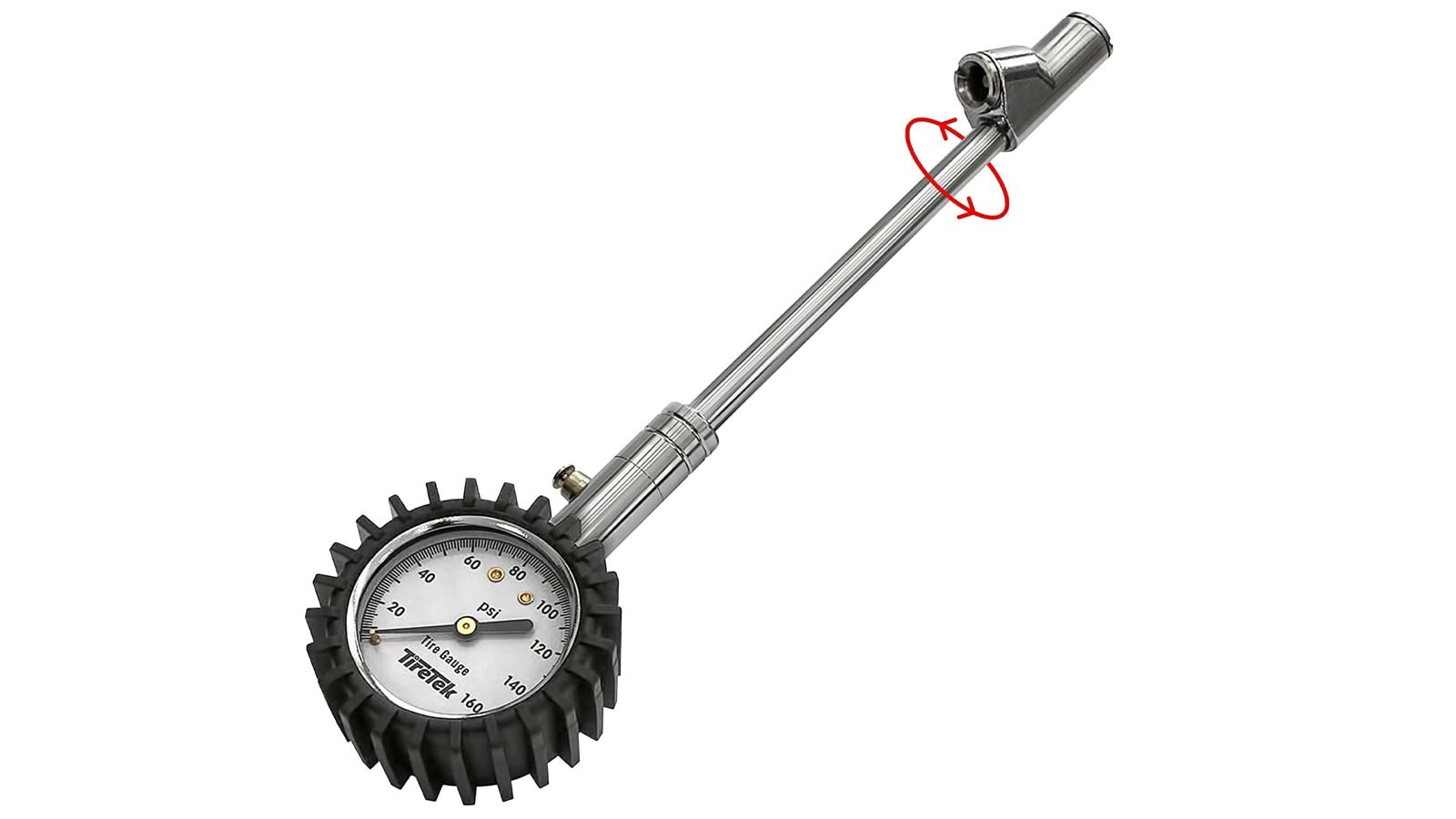
Many people opt to add an aftermarket TPMS (which I use on my Airstream trailer) to add a convenient way to monitor your tire pressure and temperature. I use and recommend the TST brand.
While the Wonder’s Ford Transit chassis is equipped with a TPMS, the Unity’s Mercedes-Benz Sprinter chassis is not. If you opt to add an after-market TPMS, in most cases, you must equip your wheels with metal valves to keep your tires from leaking due to the added weight of the sensors. Seek a qualified tire shop to get this work done, as there is a potential for leakage if not installed properly.
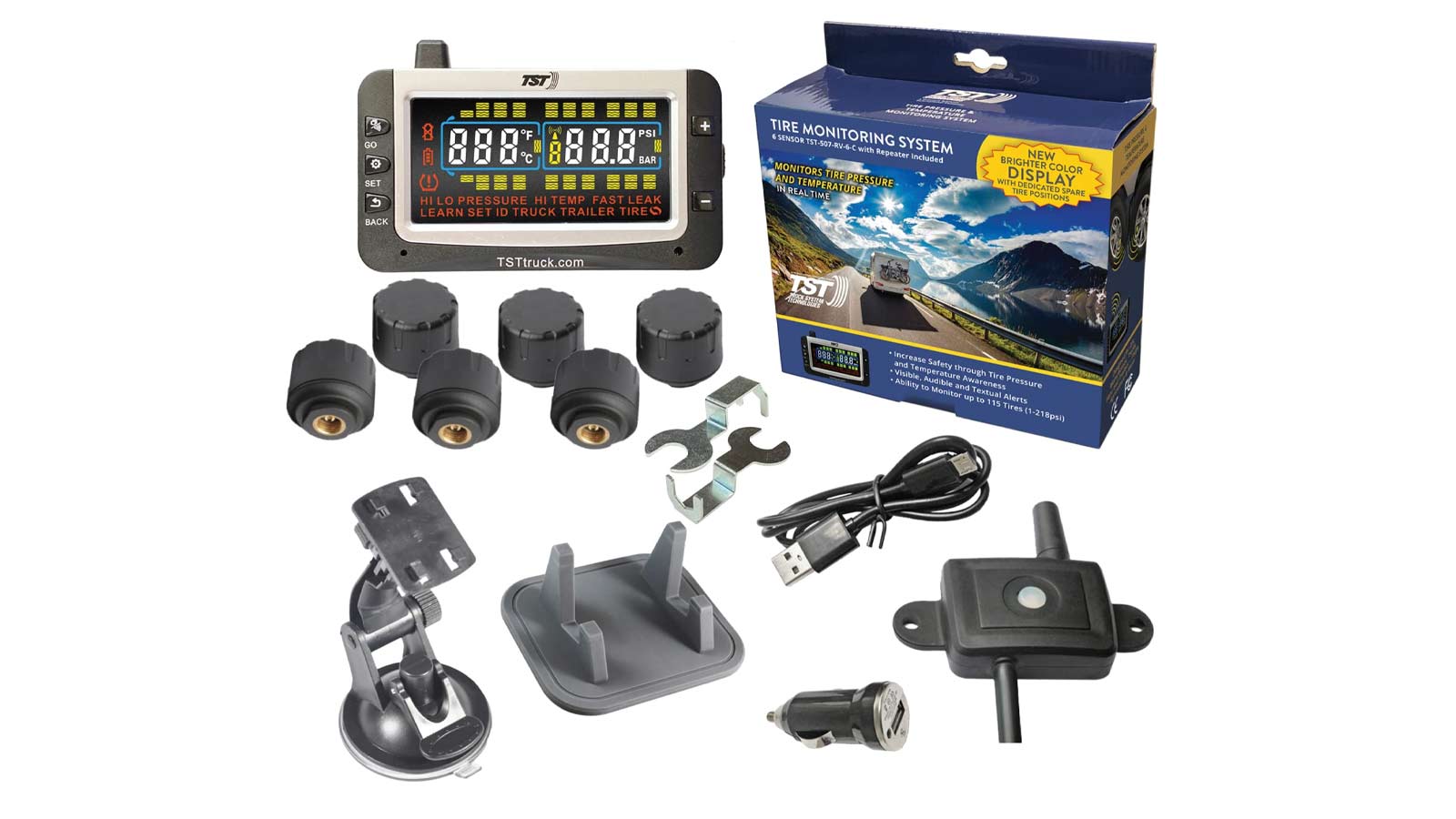
The correct PSI (pounds per square inch) will vary depending on the type of tire and manufacturer, so be sure to check your door sticker for specifics, not the on-tire PSI recommendation. Chassis manufacturers choose the correct pressure for each axle dependent upon the weight of the build and the tire manufacturer.
Always Come Prepared
Safety can’t be stressed enough with RV tires. Under-inflated tires are more likely to overheat, leading to blowouts or other dangerous situations. On the flip side, over-inflated tires put extra strain on suspension components and increase friction with the road surface, making them more prone to blowouts.
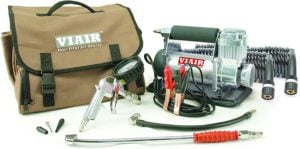 I never want to be unprepared, so I always carry a portable air compressor with us. With an RV, you can constantly change climates, thus changing your tire pressure, so it’s important to keep the correct PSI in all of your tires at all times.
I never want to be unprepared, so I always carry a portable air compressor with us. With an RV, you can constantly change climates, thus changing your tire pressure, so it’s important to keep the correct PSI in all of your tires at all times.
Another reason to carry your own compressor is you never know when you will need to air up your tires. Even a short trip could spell disaster when your pressure isn’t what it should be. Also, I’ve been to many service stations where the tire inflation machine was not working, so don’t leave this to chance. The air compressor we use and highly recommend is the Viair 400P RV.
Inspect Tires Routinely
Inspecting your tires routinely is another key component of proper tire maintenance and safety. Check for visible signs of damage like cracks, bulges, punctures, or bald spots that could indicate wear and tear or air leaks. Before we leave on a drive day, I will check pressures and visually inspect every tire. It’s difficult to check the inner dually, so it is paramount to ensure the pressure is correct. If you find any issues while inspecting your tires, they should be taken care of immediately by a professional mechanic or tire shop.
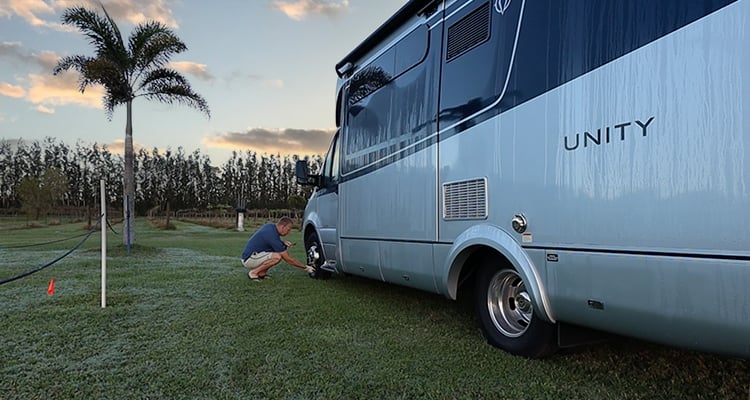
Safe Driving Habits
In addition to regularly checking and maintaining your RV’s tires, it’s also important to practice safe driving habits while on the open road. Avoid sudden stops or turns as much as possible (especially when carrying heavy loads), drive slowly around sharp corners or inclines/declines in elevation change, and avoid obstacles like potholes when possible, as these can cause significant damage even with properly maintained tires.
It’s also important not to overload! Exceeding weight limits puts undue strain on all components—including the tires—so stick within recommended guidelines whenever possible. I like to visit a CAT scale periodically to check our weight. Most truck stops have these scales, and I recommend checking your weight from time to time.
Replace Tires Every Five Years
When shopping for tires, remember that it’s important to invest in quality brands to ensure maximum performance, durability, and reliability. Many experts recommend replacing RV tires every five years regardless of mileage due to their heavy load capacity and frequent exposure to heat and UV rays. Set a regular maintenance schedule with your local dealership or mechanic to keep all components—including the tires—in peak condition!
Checking pressure levels regularly, inspecting for signs of wear, tear, and damage regularly, and replacing as needed/recommended by manufacturer guidelines; are all important elements in ensuring proper tire maintenance and safety while traveling in an RV.
Finally, ensure you use the right tires for your RV and driving conditions. Different RVs require different tire sizes and load/speed ratings to safely handle the vehicle’s weight, any cargo, and passengers’ weight. Be sure to do your due diligence before purchasing tires for your RV. Following these simple tips can help keep you and your passengers safe on the road while maximizing tire life expectancy at the same time. So, don’t forget—make sure those wheels are spinning safely before hitting the open road!
Note: Modifications may void certain aspects of your limited warranty, as well as affect resale values. Consult your warranty for details. Triple E Recreational Vehicles is not responsible or liable for any actions you take after viewing this page, or for any modifications you make to your vehicle. Please use a qualified professional to make any modifications to your vehicle, and ensure that any changes you make are safe, and in compliance with all applicable laws.


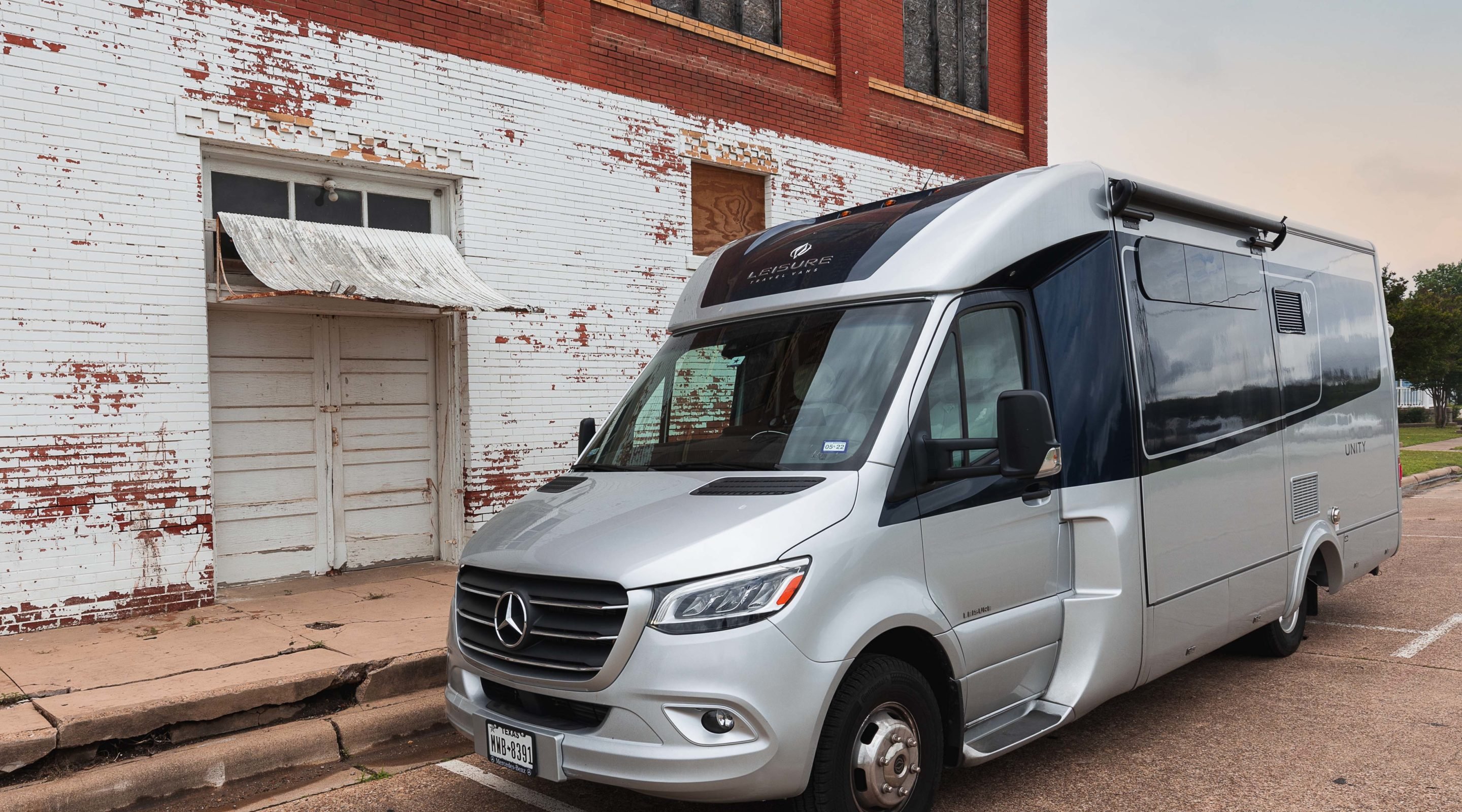
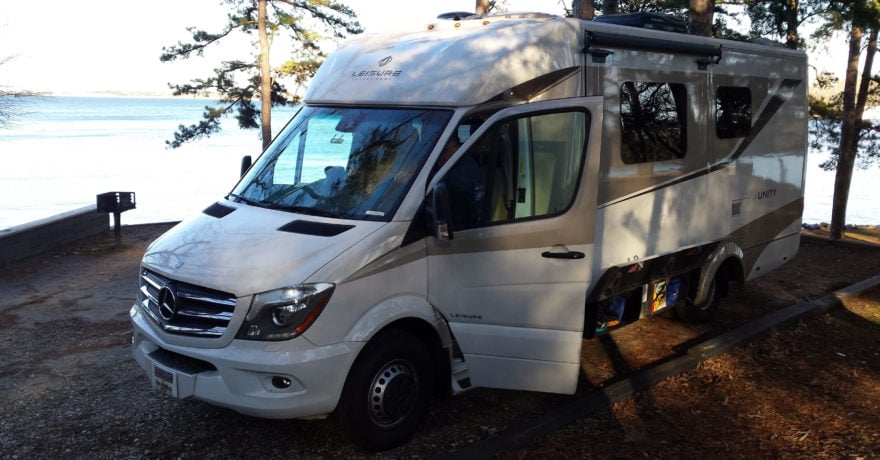
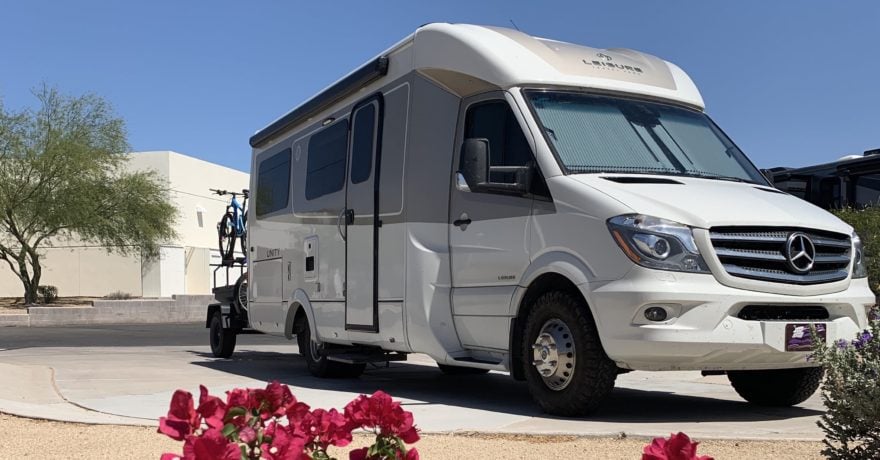

Comments